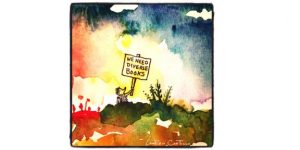 On Sunday, this blog shared a letter from Ellen Oh on why We Need Diverse Books more now then ever. The various librarians who write Free for All are big fans of diversity in books. In the past, we’ve written posts about overall diversity in books and diversity in the horror genre. We’ve also shared reading suggestions for books that deal with race and the experiences of refugees.
On Sunday, this blog shared a letter from Ellen Oh on why We Need Diverse Books more now then ever. The various librarians who write Free for All are big fans of diversity in books. In the past, we’ve written posts about overall diversity in books and diversity in the horror genre. We’ve also shared reading suggestions for books that deal with race and the experiences of refugees.
Why are we such cheerleaders for diversity around here? Is it because we serve a wonderful, diverse community and we want to represent all of our patrons through our collections and our recommendations? Yes. Do we see it as the library’s responsibility to be a place (physical and digital) for everyone? Yes, we do.
And there’s more. We also firmly believe that books, literature and stories can offer our world something it desperately needs: empathy. If you’re a reader (and if you are reading this blog, it’s probably a safe bet that you are), you won’t need science to tell you that books can help you understand the lives and experiences of those who are different from you and therefor cultivate empathy. But it can be easy to fall into reading ruts where we read books that are about people just like us or that confirm our world view.
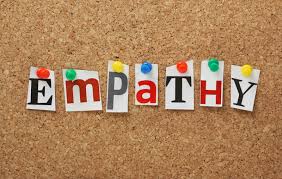
The We Need Diverse Books campaign targets the world of children’s and young adult literature, where there is a desperate need to ensure that our young people see themselves, those like them and those completely different from them on the pages of their books. Their mission is an important one and so I urge you to support it by checking out diverse books from the library and sharing them with children and teens.
But there’s overwhelming evidence out there that children and teens aren’t the only ones who could use more empathy in their lives, so I would also urge our adult readers to make a concentrated effort to read diverse books. If you need some help finding books for yourself or for the young ones in your life, here are some great places to try:
For the past two years, We Need Diverse Books has recognized outstanding children’s and young adult literature with the Walter Dean Myers’ Award.
The Pura Belpre Award is given to children’s books written by Latino/Latina authors and illustrators.
The Coretta Scott King Award is for African-American authors and illustrators of books for children and young adults.
The American Indian Youth Literature Awards are given to books that are by or about American Indians.
Arab American Book Awards may be given to books in the categories of adult fiction, adult non-fiction, poetry and child/young adult books.
In addition to giving out awards, the Jewish Book Council also provides book reviews, support for authors and book group recommendations.
For readers looking to add books with LGBT themes to their reading repertoire, there’s the Over the Rainbow List of adult books compiled by the American Library Association’s LGBT Roundtable. The Stonewall Awards are given annually to fiction, non-fiction and children’s and young adult titles and the Lambda Literary website provides ongoing reviews, author interviews and other news from the LBGT literary scene.
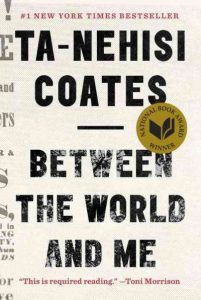
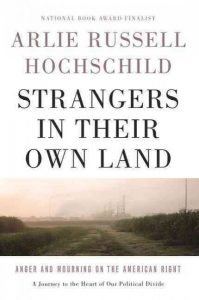 When considering what constitutes diversity, of course, you must consider race, ethnicity, religion and sexual orientation. But as Lisa Lucas of the National Book Foundation encouraged Americans yesterday during an interview with NPR, don’t forget to also seek out books that will give you “protracted engagement” with those people who have radically different political views than you do too. For those on the liberal side of the political spectrum she suggests Strangers in Their Own Land by Arlie Russell Hochschild and for conservatives, her pick is Between the World and Me by Te-Nehisi Coates. If books can indeed help us better understand those on the other side of the political divide, than reading them right now could be an act of great patriotism.
When considering what constitutes diversity, of course, you must consider race, ethnicity, religion and sexual orientation. But as Lisa Lucas of the National Book Foundation encouraged Americans yesterday during an interview with NPR, don’t forget to also seek out books that will give you “protracted engagement” with those people who have radically different political views than you do too. For those on the liberal side of the political spectrum she suggests Strangers in Their Own Land by Arlie Russell Hochschild and for conservatives, her pick is Between the World and Me by Te-Nehisi Coates. If books can indeed help us better understand those on the other side of the political divide, than reading them right now could be an act of great patriotism.
Because we want to help our readers with the ongoing task of identifying great diverse books that are worthy of their time and attention, we are launching a new Pinterest board this week dedicated to diverse books. (Check out our Pinterest Primer to get instructions on how to follow this and all our Pinterest boards). Right now the board is small, but we are eager to see it grow, so we’d like your suggestions for books worthy of a pin. We’re looking for books that encompass all types of diversity (racial, religious, ethnic, sexual and gender, cultural and political). E-mail your picks for diverse books for kids, teens or adults to me at mrobinson@noblenet.org and I’ll make sure they are added. I can honestly say that reading diverse books has made my life richer, my perspective wider and (I hope), my personality more empathetic. And I wish the same for all of you.

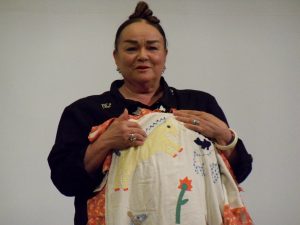
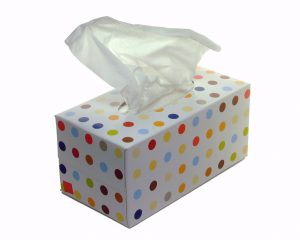
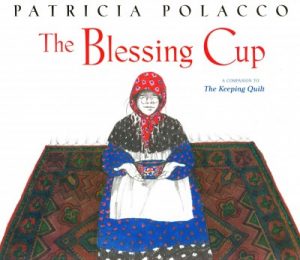 escape from Russia after her Jewish family had been ordered to leave the country. Anna’s family must leave almost all of their possessions behind, but they manage to bring with them a tea set that has always brought special blessings to their family. This book is both a timely reminder of the reality of life as a refugee and a life-affirming look at what can be accomplished through the kindness of strangers.
escape from Russia after her Jewish family had been ordered to leave the country. Anna’s family must leave almost all of their possessions behind, but they manage to bring with them a tea set that has always brought special blessings to their family. This book is both a timely reminder of the reality of life as a refugee and a life-affirming look at what can be accomplished through the kindness of strangers.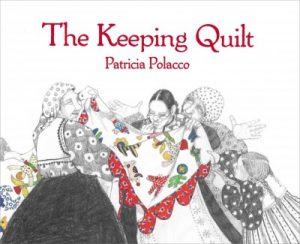 The Keeping Quilt
The Keeping Quilt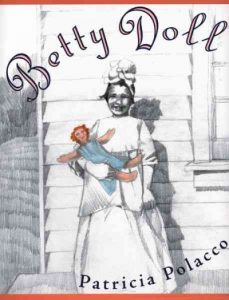 Skipping ahead a couple of generations,
Skipping ahead a couple of generations, 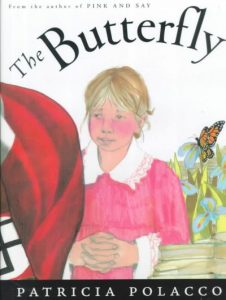 Even though she is an author for children, Patricia Polacco does not hesitate to tackle the big, sad stories of history. In addition to writing about her family’s refugee experience, she shares the story of her aunt’s experience with the French Resistance during the Nazi occupation of France in
Even though she is an author for children, Patricia Polacco does not hesitate to tackle the big, sad stories of history. In addition to writing about her family’s refugee experience, she shares the story of her aunt’s experience with the French Resistance during the Nazi occupation of France in 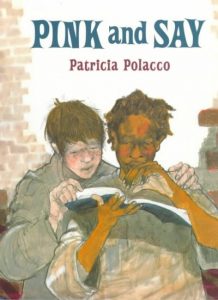 With Veteran’s Day just around the corner, I can’t think of a better time to read
With Veteran’s Day just around the corner, I can’t think of a better time to read 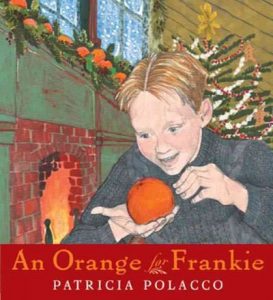 While I’m not quite yet ready for holiday books, I also want to mention, as a bonus, that if you’re looking for a charming Christmas story this year, I’d suggest you take a look at
While I’m not quite yet ready for holiday books, I also want to mention, as a bonus, that if you’re looking for a charming Christmas story this year, I’d suggest you take a look at 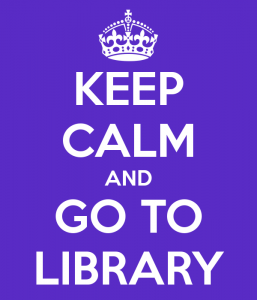 I had a perfectly nice blog post planned for today’s Wednesday @ West. But when I got to work this morning, a brief conversation with my co-workers relieved that we are all feeling a rather high level of anxiety over the upcoming election. My gut told me that we are not alone. A quick Google search confirmed my suspicion.
I had a perfectly nice blog post planned for today’s Wednesday @ West. But when I got to work this morning, a brief conversation with my co-workers relieved that we are all feeling a rather high level of anxiety over the upcoming election. My gut told me that we are not alone. A quick Google search confirmed my suspicion.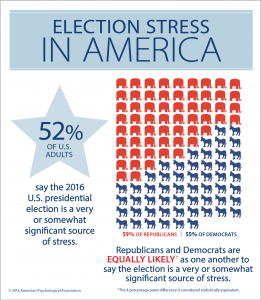 The American Psychological Association recently asked about election related stress in their annual Stress in America Survey. They found that a majority (52%) of Americans are finding this year’s election to be a “somewhat” or “significant” source of stress. And the stress is not limited to voters from one party. The APA is so concerned about these results that they have published
The American Psychological Association recently asked about election related stress in their annual Stress in America Survey. They found that a majority (52%) of Americans are finding this year’s election to be a “somewhat” or “significant” source of stress. And the stress is not limited to voters from one party. The APA is so concerned about these results that they have published 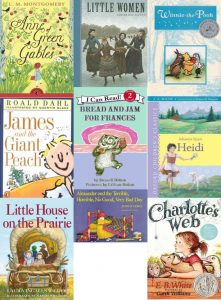 Read books. I’m not just being biased here. Science backs me up. Studies have shown that reading is the
Read books. I’m not just being biased here. Science backs me up. Studies have shown that reading is the 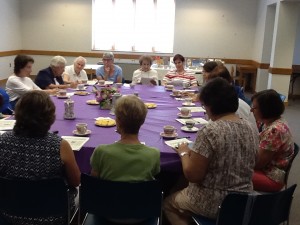 Drink tea. Unsurprisingly perhaps, it is a
Drink tea. Unsurprisingly perhaps, it is a 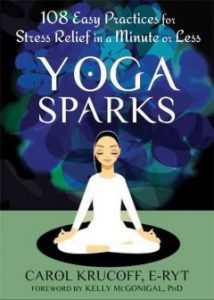 Do yoga. Even the Wall Street Journal has suggested that Americans will need some stress relief after tonight’s final presidential debate. They are imploring readers to
Do yoga. Even the Wall Street Journal has suggested that Americans will need some stress relief after tonight’s final presidential debate. They are imploring readers to 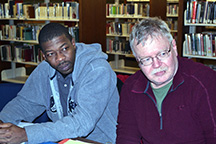 Help others.
Help others. 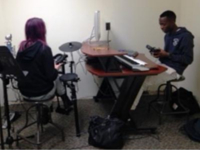 Immerse yourself in music. Ah yes, music, both
Immerse yourself in music. Ah yes, music, both 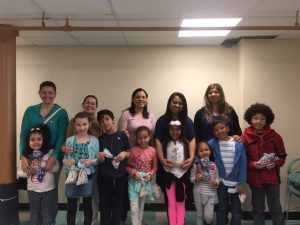
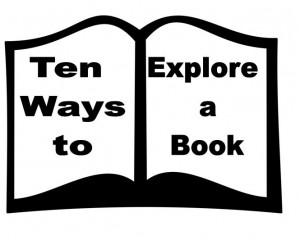
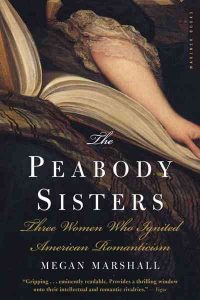

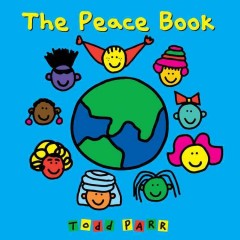 When it comes to books about peace, I make no distinction between books for adults, books for teens and books for children. Peace, as complex and elusive as it is for us adults, lends itself particularly well to the inspiring, simple and beautiful way many books for children are written. We “grown-ups” often even have trouble agreeing on a definition of peace. To solve that question, I will refer you to a book that I read regularly to my ten month old boys:
When it comes to books about peace, I make no distinction between books for adults, books for teens and books for children. Peace, as complex and elusive as it is for us adults, lends itself particularly well to the inspiring, simple and beautiful way many books for children are written. We “grown-ups” often even have trouble agreeing on a definition of peace. To solve that question, I will refer you to a book that I read regularly to my ten month old boys: 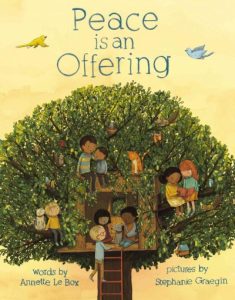 Also shelved in the children’s section but desperately needed by us adults are
Also shelved in the children’s section but desperately needed by us adults are 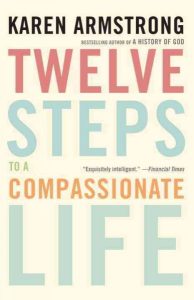 The Dalai Lama certainly has his share of insights into peace and he tells us “Peace in the world relies on individuals finding inner peace.” If you need a little help finding inner peace and translating it into outer peace, take a look at
The Dalai Lama certainly has his share of insights into peace and he tells us “Peace in the world relies on individuals finding inner peace.” If you need a little help finding inner peace and translating it into outer peace, take a look at 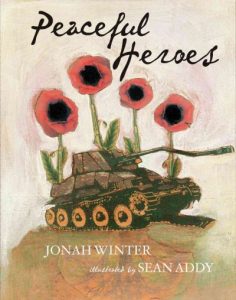 When you find yourself doubting the plausibility or effectiveness of making peace, you need to find some
When you find yourself doubting the plausibility or effectiveness of making peace, you need to find some 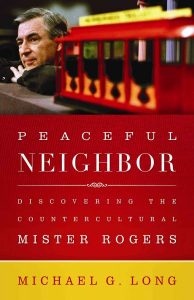 w of my personal peace heroes are also worth reading about. If you think the transcendent father of children’s television, Fred Rogers, just wore sweaters and sang cheesy songs about self-esteem, take a look at Michael Long’s biography
w of my personal peace heroes are also worth reading about. If you think the transcendent father of children’s television, Fred Rogers, just wore sweaters and sang cheesy songs about self-esteem, take a look at Michael Long’s biography 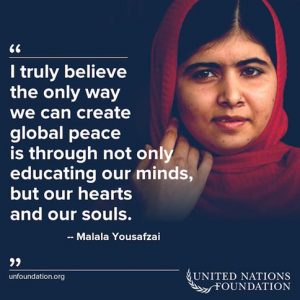 Speaking of people who are radically and bravely pursuing peace in the modern world, I would be beyond remiss if I did not mention the autobiography of the world’s youngest Noble Peace Laurette: Malala Yousafzai.
Speaking of people who are radically and bravely pursuing peace in the modern world, I would be beyond remiss if I did not mention the autobiography of the world’s youngest Noble Peace Laurette: Malala Yousafzai. 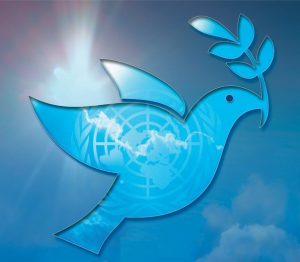 By and large the books I’ve discussed in this post are nonfiction. But perhaps one of the best ways we can promote peace on a daily basis is to read and share fictional works. It’s a scientifically proven fact that
By and large the books I’ve discussed in this post are nonfiction. But perhaps one of the best ways we can promote peace on a daily basis is to read and share fictional works. It’s a scientifically proven fact that 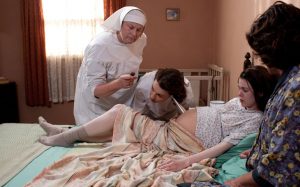 Anyone who works with me, follows me on Goodreads, talks to me regularly about books or comes to Literatea will know that I have a number of quirky reading interests. I simply cannot read enough about tiny houses, nuns, the Amish and … midwives. And if a book combines more than one of these, well than, it is pretty much guaranteed a top place on my To Read list.
Anyone who works with me, follows me on Goodreads, talks to me regularly about books or comes to Literatea will know that I have a number of quirky reading interests. I simply cannot read enough about tiny houses, nuns, the Amish and … midwives. And if a book combines more than one of these, well than, it is pretty much guaranteed a top place on my To Read list.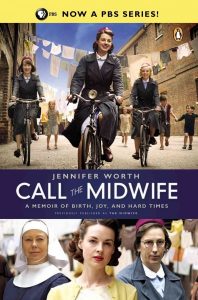 My fascination with midwife literature (Is that an actual genre? If not, I guess I just created it) was, most unusually for me, inspired by a television show. In 2012 when I was going through my annual television slump after a season of Downtown Abbey ended, I saw that PBS was debuting another British period piece first aired by the BBC.
My fascination with midwife literature (Is that an actual genre? If not, I guess I just created it) was, most unusually for me, inspired by a television show. In 2012 when I was going through my annual television slump after a season of Downtown Abbey ended, I saw that PBS was debuting another British period piece first aired by the BBC. 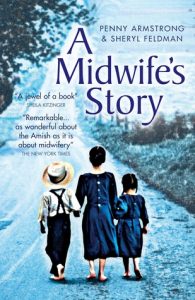 If you find yourself pulled in by the real life aspect of Call the Midwife, there are a number of other good memoirs written by midwives. One of the first I read was
If you find yourself pulled in by the real life aspect of Call the Midwife, there are a number of other good memoirs written by midwives. One of the first I read was 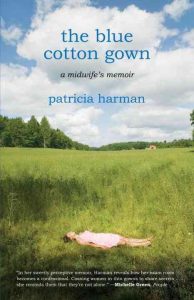 Another midwife turned author is Patricia Harman. She has written two memoirs. One,
Another midwife turned author is Patricia Harman. She has written two memoirs. One, 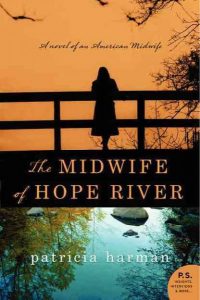 Interestingly, Harman did not stop writing once she had shared her own adventures in midwifery. She followed her memoirs up with two novels:
Interestingly, Harman did not stop writing once she had shared her own adventures in midwifery. She followed her memoirs up with two novels: 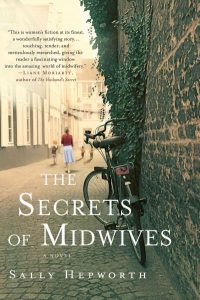 While my favorite midwife books, both novels and memoirs, are period pieces that combine the stories of both the midwives and their patients, I still found
While my favorite midwife books, both novels and memoirs, are period pieces that combine the stories of both the midwives and their patients, I still found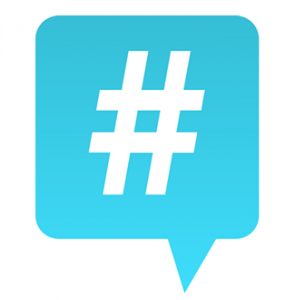 If you don’t know what a hashtag syllabus is, you aren’t alone. They are a new to me as well. And how I do love new book-related things!
If you don’t know what a hashtag syllabus is, you aren’t alone. They are a new to me as well. And how I do love new book-related things! 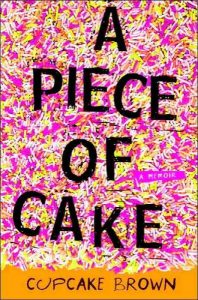 ke
ke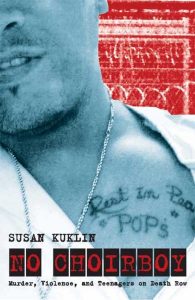 No Choirboy
No Choirboy